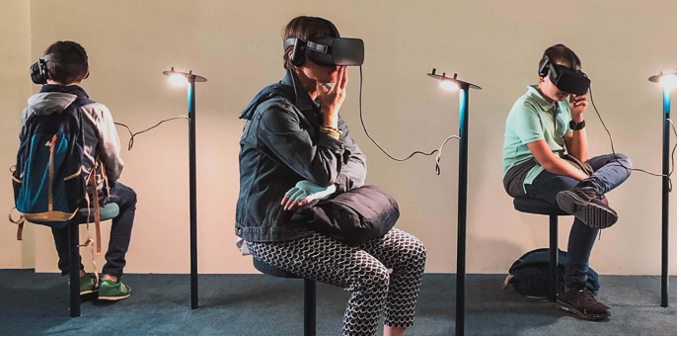Team 18
Social isolation is a prevalent issue for many older adults in today’s society. When social isolation is persistent, this can result in distressing and sustained feelings of loneliness. According to the Joint Research Centre (2022), one in three seniors in Europe experience loneliness. These feelings can range from mild to intense, with more than one sixth of seniors in Germany reporting severe loneliness rates (Hajek et al., 2023). In turn, a lack of social interaction affects elderly’s physical health and mental wellbeing in several ways, from being a risk factor for dementia to cognitive decline (Livingston et al., 2020; James et al., 2011). Another problem for many older adults is that they experience barriers to adopt technological applications (Lee, 2022; Czaja & Lee, 2006). Often times, digital tools provide valuable solutions to improve the health and daily lives of seniors (Marston and Musselwhite, 2021; Wang, 2024), but elderly people are not well-equipped to independently engage with such tools.
Our team has developed Social Seniors, a GenAI-enabled application that promotes social engagement in order to address the challenges of social isolation and loneliness among elderly. The platform aims to build a scalable and inclusive community that supports meaningful social connections. With the help of Generative AI, Social Seniors enables users to explore activities and connect and communicate with companions, through voice interaction, adaptive matching, and personalized activity recommendations. In addition, a built-in schedule keeps track of all your planned activities, and ensures you receive timely reminders. Generative AI allow users to interactively engage with the platform as it enhances accessibility and avoids the frustration of complex interfaces that many elderly users face (Czaja & Lee, 2006). Furthermore, the strength of Social Seniors lies in its collaborative approach. The platform serves as a bridge between digital technology and the real world by collaborating with local businesses, community centers, and municipalities. Through these partnerships, Social Seniors is able to maintain its credibility and relevance to the preferences of senior users.
Based on the problem statement and business impacts of Social Seniors, the overall impact of Social Seniors shows that the integration of GenAI has gone beyond just the operational efficiency, it also delivers meaningful social and individual benefits. Key features like personalized recommendations and adaptive matching would encourage engagement, while partnerships with local businesses would translate digital connections into real-life social participation. However, integrating GenAI also leads to various challenges, such as building and maintaining user trust, ensuring transparency in suggestions delivered by AI, protecting personal data, and addressing the different levels of digital literacy among seniors. To address these, Social Seniors must ensure GDPR compliance, transparency in AI suggestions and recommendations, and active community monitoring to maintain a safer environment.
Overall, the platform demonstrates how GenAI can serve as an initiator for social empowerment, it serves as a bridge helping to cross the digital divide, reducing loneliness, and setting up a new benchmark for inclusive, technology-driven wellbeing solutions for elderly users.
References
Czaja, S. J., & Lee, C. C. (2006). The impact of aging on access to technology. Universal Access in
the Information Society, 5(4), 341–349. https://doi.org/10.1007/s10209-006-0060-x
Hajek, A., Zwar, L., Gyasi, R. M., Kretzler, B., & König, H. (2023). Prevalence and determinants of
loneliness among the oldest old living in institutionalized settings. Zeitschrift Für Gerontologie Und Geriatrie, 57(3), 214–219. https://doi.org/10.1007/s00391-023-02196-x
James, B. D., Wilson, R. S., Barnes, L. L., & Bennett, D. A. (2011). Late-Life Social Activity and
Cognitive Decline in Old Age. Journal Of The International Neuropsychological Society, 17(6), 998–1005. https://doi.org/10.1017/s1355617711000531
Joint Research Centre. (2022). Loneliness prevalence in the EU. The Joint Research Centre: EU
Lee, C. (2022). Technology and aging: the jigsaw puzzle of design, development and distribution.
Nature Aging, 2(12), 1077–1079. https://doi.org/10.1038/s43587-022-00325-6
Livingston, G., Huntley, J., Sommerlad, A., et al (2020). Dementia prevention, intervention, and care:
2020 report of the lancet commission. The Lancet., 396 (10248) (2020), pp. 413-446, https://doi.org/10.1016/s0140-6736(20)30367-6
Marston, H. R., & Musselwhite, C. B. A. (2021). Improving Older People’s Lives Through Digital
Technology and Practices. Gerontology And Geriatric Medicine, 7. https://doi.org/10.1177/23337214211036255
Wang, C. (2024). Artificial Intelligence Helps the Elderly to Integrate into the Internet Age. Advances
in Intelligent Systems Research/Advances in Intelligent Systems Research, 533–541. https://doi.org/10.2991/978-94-6463-512-6_56



